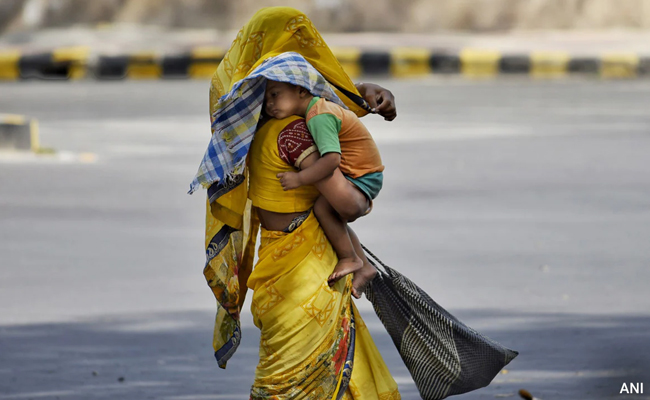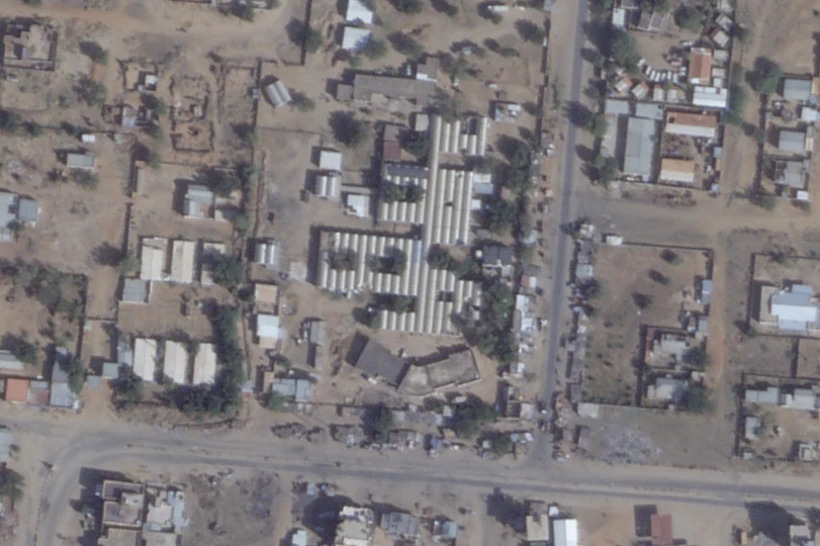New Delhi (PTI): If global temperatures rise by 2 degrees Celsius above pre-industrial levels, around 2.2 billion (220 crore) people living in the Indus River Valley in northern India and eastern Pakistan may experience extended periods of heat that exceed human tolerance, according to a new research.
The research, published in the peer-reviewed journal Proceedings of the National Academy of Sciences (PNAS), indicates that in such a scenario, northern India, eastern Pakistan, eastern China and Sub-Saharan Africa would predominantly encounter high-humidity heatwaves.
Heatwaves with higher humidity levels can be more perilous because the air cannot efficiently absorb excess moisture. This limitation restricts the human body's ability to evaporate sweat and affects the moisture content of certain infrastructure like evaporative coolers.
These regions are also home to lower-to-middle income countries, meaning that many affected individuals may lack access to air-conditioning or effective ways to mitigate the adverse health effects of extreme heat, the researchers explained.
Humans can endure specific combinations of heat and humidity, but when these thresholds are surpassed, individuals become susceptible to heat-related health issues, including heatstrokes or heart attacks. With climate change driving global temperatures upward, billions of people could find themselves pushed beyond these limits.
The Earth's global surface temperature has already increased by approximately 1.15 degrees Celsius, with the rise closely linked to the release of carbon dioxide (CO2), primarily by developed countries, into the atmosphere since the onset of the industrial revolution.
In 2015, 196 countries signed the Paris Agreement, aiming to limit the global temperature increase to 1.5 degrees Celsius above pre-industrial levels.
However, according to the Intergovernmental Panel on Climate Change (IPCC), an organisation composed of the world's leading climate scientists, the world is on course for a temperature increase of around 3 degrees Celsius by the end of this century under a business-as-usual scenario.
The IPCC emphasises that to avert extreme, destructive and likely irreversible effects of climate change, the world must cut emissions by half by 2030 compared to the 2019 levels to limit the rise in the global average temperature to 1.5 degrees Celsius relative to pre-industrial levels.
According to global agencies, the last four months (June, July, August and September) have been the hottest on record, with 2023 poised to become the warmest year ever.
The research team conducted modelling for global temperature increases ranging from 1.5 degrees Celsius to 4 degrees Celsius, the latter considered a worst-case scenario where warming would accelerate. This allowed them to identify areas where warming would lead to heat and humidity levels surpassing human tolerance.
"To understand how complex real-world problems like climate change will affect human health, you need expertise in both planetary science and human physiology," said co-author W Larry Kenney, professor of physiology and kinesiology and the Marie Underhill Noll Chair in Human Performance at the Pennsylvania State University.
The research suggests that the ambient wet-bulb temperature limit for young, healthy individuals is approximately 31 degrees Celsius, as indicated in a study published last year by Penn State researchers. However, the specific threshold for any individual at a given moment also depends on factors, such as exertion level and other environmental variables, including wind speed and solar radiation.
In recorded human history, instances of temperatures and humidity exceeding human limits have been limited and occurred only briefly in the Middle East and Southeast Asia, according to the researchers.
If global warming continues to reach 3 degrees Celsius above pre-industrial levels, the researchers argue that areas such as the Eastern Seaboard and the middle of the United States -- from Florida to New York and from Houston to Chicago -- would begin to experience heat and humidity levels exceeding human tolerance. South America and Australia would also face extreme heat at this level of warming.
While the United States is projected to experience more heatwaves at current warming levels, these heatwaves are not expected to consistently exceed human limits as frequently as in other parts of the world.
To halt the rising temperatures, the researchers stress the need for significant reductions in greenhouse gas emissions, particularly carbon dioxide emissions from fossil fuel combustion. Without these changes, middle-income and low-income countries are likely to be the hardest hit, the researchers cautioned.
Let the Truth be known. If you read VB and like VB, please be a VB Supporter and Help us deliver the Truth to one and all.
El Fasher (AP): Some 70 people were killed in an attack on the only functional hospital in the besieged city of El Fasher in Sudan, the chief of the World Health Organisation said on Sunday, part of a series of attacks coming as the African nation's civil war escalated in recent days.
The attack on the Saudi Teaching Maternal Hospital, which local officials blamed on the rebel Rapid Support Forces, came as the group has seen apparent battlefield losses to the Sudanese military and allied forces under the command of army chief Gen Abdel-Fattah Burhan. That includes Burhan appearing near a burning oil refinery north of Khartoum on Saturday that his forces said they seized from the RSF.
International mediation attempts and pressure tactics, including a US assessment that the RSF and its proxies are committing genocide and sanctions targeting Burhan, have not halted the fighting.
In the Saudi hospital attack in El Fasher, WHO Director-General Tedros Adhanom Ghebreyesus offered the death toll in a post on the social platform X.
Officials and others in the capital of North Darfur province had cited a similar figure Saturday, but Ghebreyesus is the first international source to provide a casualty number. Reporting on Sudan is incredibly difficult given communication challenges and exaggerations by both the RSF and the Sudanese military.
“The appalling attack on Saudi Hospital in El Fasher, Sudan, led to 19 injuries and 70 deaths among patients and companions,” Ghebreyesus wrote. “At the time of the attack, the hospital was packed with patients receiving care.”
Another health facility in Al Malha also was attacked Saturday, he added.
“We continue to call for a cessation of all attacks on health care in Sudan, and to allow full access for the swift restoration of the facilities that have been damaged,” he wrote. “Above all, Sudan's people need peace. The best medicine is peace.”
Ghebreyesus did not identify who launched the attack, though local officials had blamed the RSF for the assault.
The RSF and Sudan's military began fighting each other in April 2023. Their conflict has killed more than 28,000 people, forced millions to flee their homes and left some families eating grass in a desperate attempt to survive as famine sweeps parts of the country.
Other estimates suggest a far higher death toll in the civil war.




_vb_20.jpeg)
